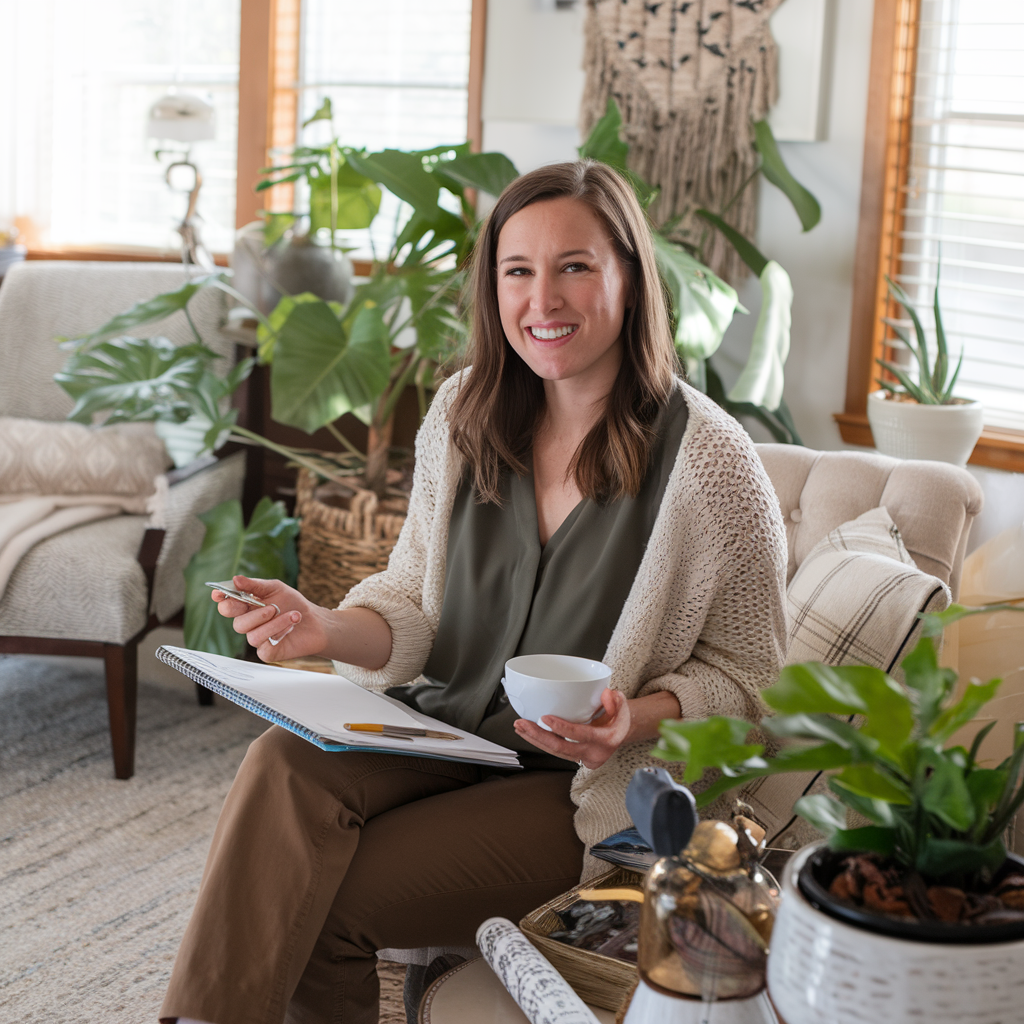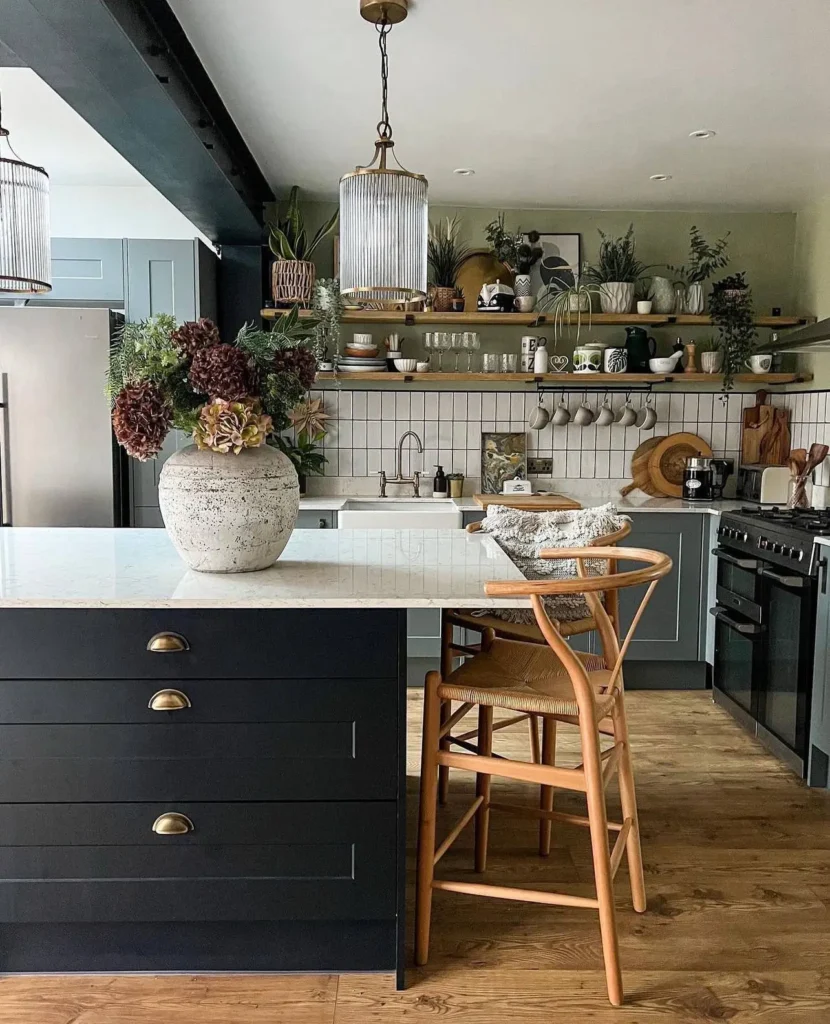
Starting a homestead in the suburbs lets you turn your home into a greener, more rewarding place. Many people choose this path to have more control over where their food comes from, opting for an organic lifestyle away from the unpredictability of store-bought supplies.
It’s a chance to get back to basics and truly appreciate the hard work that goes into growing and making your own food.
Even if you live in the suburbs you can be a homesteader. It’s not a requirement to live out in a rural area on a big ranch. There are various sizes of homesteads that can work with whatever your situation is.
Living a Homestead Lifestyle
With a bit of creativity and planning, you can turn your suburban home into a mini homestead, reaping the benefits of sustainability, self-reliance, and a deeper connection to nature.
In this article, we will go over how to take a simple suburban garden and turn it into a homestead.
1. Essential Tools Needed

When starting your suburban homestead, having the right tools at your disposal can make a big difference in how efficiently and effectively you manage your space. While you don’t need a vast array of equipment, certain essential tools designed for farm and ranch work will simplify many tasks.
A good spade and a sturdy rake are essential for setting up and maintaining your garden beds. They make it easier to dig up the soil, plant seeds, and clear out unwanted leaves or debris.
A wheelbarrow is also super handy because it allows you to move soil, compost, or even your harvest easily from one place to another.
For taking care of plants, you’ll want a few hand tools, such as pruners, a garden fork, and a hoe. These are great for cutting back plants, weeding around your veggies, and loosening the soil to help your plants grow better.
2. Plan Out Your Garden

Building a sustainable garden in your suburban homestead means making the most of the space you have and choosing gardening methods that boost your garden’s productivity. When you don’t have a lot of space, you’ve got to think creatively.
Vertical Gardening
This is the best way to use limited space. It lets you grow plants upwards on trellises or in hanging planters so you can fit more into your garden.
Use trellises, hanging pots, or wall-mounted planters to grow herbs, vegetables, and flowers upward instead of outward.
Container Gardening

If you lack a yard, pots and container gardening is your best friend. They’re perfect for growing tomatoes, peppers, or even small fruit trees on patios and balconies.
Raised Beds
If you do have a yard, raised garden beds are a great way to maximize growing space and improve soil quality.
It’s really important to choose plants that like your local weather and soil. Some plants will thrive in your backyard with very little fuss if they’re right for your climate.
3. Start a Garden

A garden is the heart of any homestead. It provides fresh produce, teaches valuable skills, and brings you closer to nature. Here’s how to get started:
- Choose the Right Crops: Focus on fruits and vegetables you eat often and that thrive in your climate. Lettuce, tomatoes, peppers, and zucchini are great options for beginners.
- Compost: Create your own compost from kitchen scraps and yard waste to enrich your soil and reduce waste.
- Plant Perennials: Perennial plants like asparagus, strawberries, and rhubarb come back year after year, saving you time and effort.
4. Compost

Composting is like a garden’s way of recycling. It lets you turn everyday kitchen scraps and yard waste into super-rich soil that’s perfect for your plants.
Starting a compost pile doesn’t need to be complicated. Find a spot in your backyard that’s out of the way since compost can get a bit messy and smelly.
You can just start a pile on the ground, or use a compost bin, which helps keep things tidy and speeds up the process. Make sure to mix ‘greens’ like vegetable peels with ‘browns’ like dry leaves or shredded newspaper.
This mix is crucial because it helps everything break down smoothly.
5. Keep Backyard Chickens

If your local regulations allow it, consider keeping a small flock of chickens. They’re surprisingly low-maintenance and offer multiple benefits:
- Fresh Eggs: There’s nothing like collecting fresh eggs each morning.
- Pest Control: Chickens love to eat bugs, helping to keep your yard pest-free.
- Compost Contributors: Chicken manure is a fantastic addition to compost, enriching your garden soil.
Make sure to research local laws and provide your chickens with proper housing, like a secure coop and outdoor run.
6. Harvest Rainwater

Water is a precious resource, especially when maintaining a garden. Harvesting rainwater is an eco-friendly way to keep your plants hydrated while reducing your water bill.
- Install a Rain Barrel: Place barrels under your gutter downspouts to collect rainwater. Use it to water your garden or clean outdoor spaces.
- Check Regulations: Some areas have restrictions on rainwater harvesting, so be sure to check your local laws.
7. Learn Food Preservation Skills

One key to self-sufficiency is preserving the food you grow so it lasts through the seasons. There are plenty of methods to try:
- Canning: Preserve fruits, vegetables, jams, and sauces in jars for long-term storage.
- Freezing: Invest in a freezer to store blanched vegetables, fruits, and pre-made meals.
- Dehydrating: Dry herbs, fruits, and even meat for lightweight, shelf-stable storage.
- Fermenting: Learn to make pickles, sauerkraut, or kombucha for tasty, probiotic-rich treats.
8. Make Your Own Household Products

Homesteading isn’t just about food; it’s also about reducing your reliance on store-bought goods. Start by making your own:
- Cleaning Products: Vinegar, baking soda, and essential oils can be used to create effective, natural cleaners.
- Soap and Lotion: Try your hand at making homemade soaps, balms, and lotions tailored to your family’s needs.
- Candles: Use beeswax or soy wax to create eco-friendly candles for your home.
9. Raise Small Livestock

Chickens aren’t the only animals that can thrive in a suburban setting. Depending on your space and local regulations, you might consider:
- Rabbits: Easy to care for and a source of meat or manure for gardening.
- Quails: Smaller than chickens but still provide delicious eggs.
- Bees: Beekeeping supports pollination and provides honey and beeswax.
10. Get to Know Your Community

Homesteading in the suburbs doesn’t mean going it alone. Building a community can make your journey easier and more enjoyable.
You could share tips and seeds with neighbors, gardening clubs, or local enthusiasts. This will also allow you to exchange your surplus produce or eggs for items your neighbors have.
If you can’t grow products yourself, visit local farmers’ markets to help support the local community.
11. Educate Yourself Continuously
Homesteading is a learning process, and there’s always something new to discover:
- Books and Blogs: Read up on gardening, animal care, and DIY projects.
- Workshops and Classes: Attend local workshops on canning, beekeeping, or composting.
- YouTube and Podcasts: There’s a wealth of free resources online from experienced homesteaders.
12. Start Small and Grow

It’s easy to feel overwhelmed when starting your suburban homestead but remember, you don’t have to do everything at once. Begin with one or two projects and expand as you gain confidence and experience. For example:
- Year 1: Build a small garden and start composting.
- Year 2: Add chickens and learn canning.
- Year 3: Explore solar panels or beekeeping.
Living a homestead lifestyle in the suburbs is all about working with what you have and making intentional choices to lead a more sustainable and fulfilling life.
Whether you’re growing fresh produce, keeping chickens, or simply reducing waste, every small step brings you closer to your homesteading dreams.
Disclosure: Some of the links above are affiliate links, meaning that at no additional cost to you, I will receive a very small commission if you click through and make a purchase. These links help to pay the editorial costs of writing a blog. For more information, please read my full affiliate disclosure here.
I also use Artificial Intelligence Image generators to create some of my images. These are to show you examples of my ideas and inspiration when I cannot produce the real images myself.


